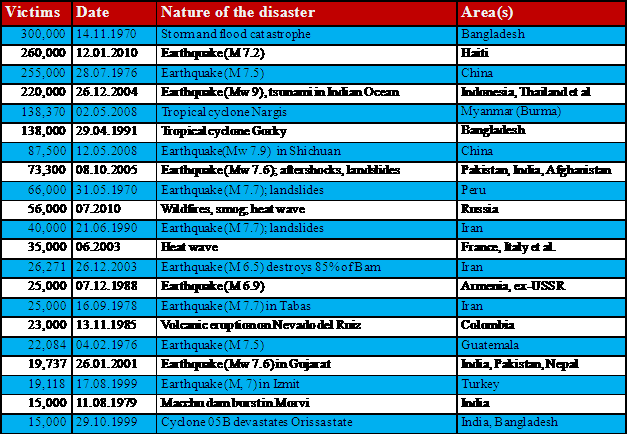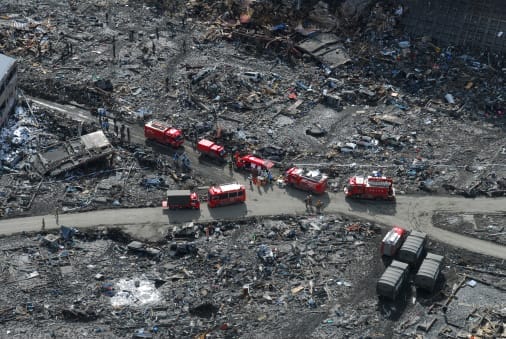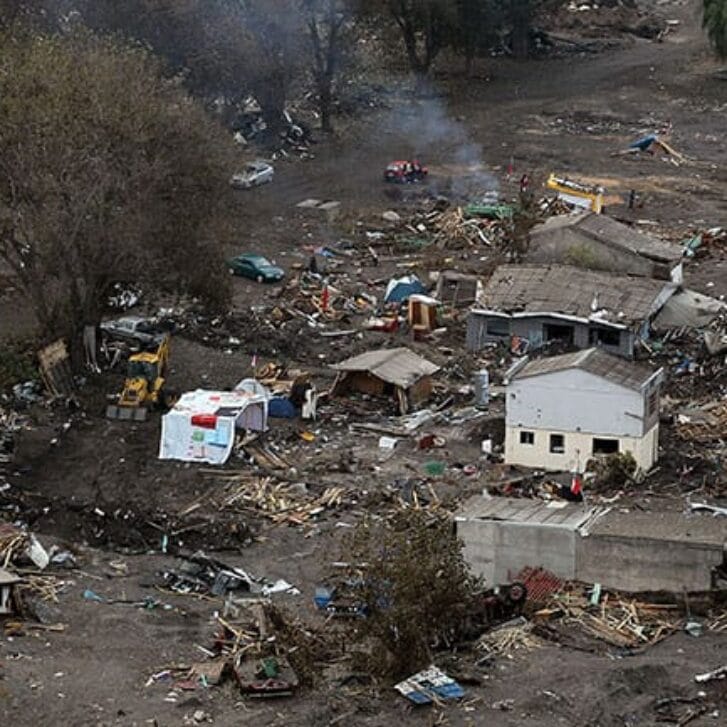As time progresses, one better appreciates the scale of the devastation in Japan. When I wrote on my own blog yesterday, a few hours after the quake hit and the 30-foot high tsunami started, “only” a few hundred people had been reported dead. As of today, Japanese police report that the number could be as high as 10,000. This would be many more victims than the major Kobe quake in 1995, in which 6,434 people lost their lives. The Kobe quake had been Japan’s worst earthquake since the Great Kantō earthquake in 1923, which claimed 140,000 lives.
In 1923, risk reduction measures in Japan were very poor, with almost no quake-proof construction. In recent decades, Japan has done an enormous amount of work to make its infrastructure and construction much more resilient to quakes. Japanese kids are regularly instructed on what to do in the event of an earthquake and how to survive if they are trapped in a building as a result. Given the geography of the island and the omnipresence of quake risk, this is part of Japanese culture. Japan has one of the highest levels of disaster preparedness—and certainly so for earthquake preparedness—among OECD countries. As such, the number of deaths from Friday’s quake is simply astonishing.
The chart below (click to enlarge) depicts the 21 most devastating natural disasters between 1970 and 2010 in terms of number of victims (fatalities or missing). Most of these catastrophes occurred in poor or developing countries where safety measures and warning systems are lacking.

Sources: Erwann Michel-Kerjan (Center for Risk Management, The Wharton School, University of Pennsylvania)
Economic impact
The 1995 Kobe earthquake is considered to be the most devastating quake in recent history in terms of economic losses–$100 billion. Friday’s quake dissipated energy more than 100 times that of the 1995 quake. While the quake’s epicenter was located several hundred miles east of Japan, the destruction and flooded areas resulting from the tsunami are truly large-scale. And, as if a massive earthquake and major tsunami were not enough, the quake also triggered an explosion in the Fukushima Daiichi nuclear power plant’s Unit 1 in Okumamachi, Fukushima prefecture.
This disaster is an example of a “Perfect Storm” because of the combination of so many terrible things happening simultaneously. It will take weeks to have precise estimates of the total direct (destruction) and indirect (nuclear threats, emergency relief, business interruption, stock decline, loss to tourism) economic losses. But they will probably reach more than $100 billion.
As of this writing, it appears that Japan might be facing one of the most severe civil nuclear threats in an OECD country since the Three Mile Island accident in Pennsylvania in 1979 and, of course, the Chernobyl explosion in the former USSR in 1986. The priority today is to ensure that the accident is properly handled so there is no or limited nuclear irradiation outside the facility. No question, this accident will have an impact on the commercial nuclear energy industry worldwide.
Lessons for the United States and Europe
This massive earthquake in Japan is one more in a tragic series of recent devastating quakes beginning with Haiti in January 2010, Chile in February 2010 and New Zealand last month. While it is not clear how these events are interrelated, if at all, this certainly poses the question of whether other countries, or other communities, are prepared to handle quakes of similar magnitude.
Is California ready for a $100 billion earthquake this year? I doubt it. Research shows that only 10 percent of Californians have quake insurance (due in part to quake insurance being a costly product, coupled with individuals’ beliefs that a quake “won’t happen to them”). Given the current fiscal crisis in that state, if a quake does happen, who would pay for the damages to the uninsured 90 percent?
Is America ready? Unfortunately, we are not. After Hurricane Katrina, it seemed as though the question of how to better manage and finance large-scale catastrophes would be seriously considered by the highest level of decision makers. But then other crises occurred, and attention to natural disasters somewhat faded. This is the conclusion of our recent book, co-authored with my colleague Howard Kunreuther and several others, At War with the Weather.
We know what to do. What is lacking is the motivation to act, now. The Japanese Perfect Storm is just the latest reminder that we could be next on the extreme event list.


























